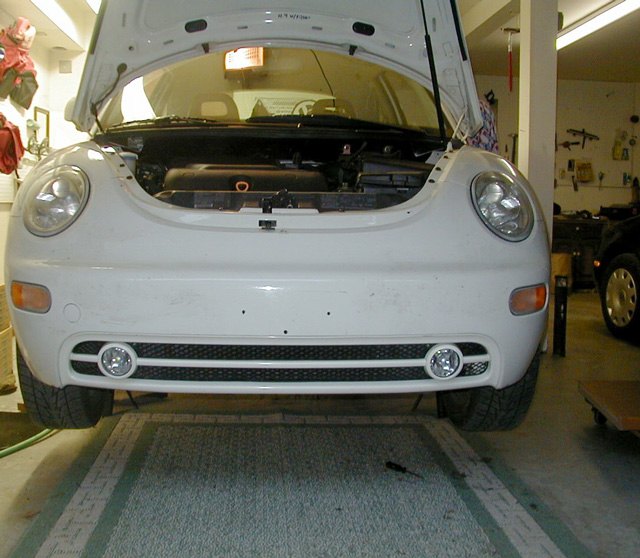#ProductReview
The 18-Year-Old Auto Upgrade: Backup Sensors - Hopkins NVision
If you’re looking for some electronic assistance backing your car but don’t want to mess with installing a rearview camera, a backup sensor system might be the solution.
Consisting of ultrasonic sensors mounted at the rear of the vehicle and connected to an audible alarm inside the car, a sensor system gives you a warning when you’re getting close to something behind you, typically growing more urgent as you get closer.
The 18-Year-Old Auto Upgrade: Backup Camera - Pyle PLCM7500
There’s no question a rearview camera can add a measure of convenience to the business of backing up and increase your margin of safety. Studies have shown a rear camera makes it easier to see small children, pets, or obstacles behind your vehicle that might be otherwise invisible using just your mirrors or looking out the rear window. And that goes double for pickups and other tall vehicles, which can have a blind spot as long as 50 feet to the rear. Adding a rearview camera can also make it easier to see and hook up a trailer.
Many new cars have backup cameras, and it’ll be mandatory equipment by the 2018 model year. For those of us without, the aftermarket offers plenty of choices.
The 18-Year-Old Auto Upgrade: Power Inverter - Energizer EN180
Even if your car is equipped with a built-in power port or two, it may not have enough outlets to support all the electronic devices and habits of you and yours, or said ports may be inconveniently located or accessed. Maybe you want a configuration your car doesn’t have, like a 120V outlet to power a laptop or portable DVD player. Or maybe whatever ports your car has just haven’t been quite right since that last Big Gulp incident.
If any of these scenarios is the case, a power inverter can be the solution. Depending on the make and model you choose, an inverter can give you the versatility to power several devices at once, juice up your laptop or other electronic device, or provide more power and quicker charging than built-in ports in your car. And with prices starting at less than $50, inverters are affordable enough to make sense for almost any budget.
The 18-Year-Old Auto Upgrade: Bluetooth Speaker - Motorola Sonic Rider
Safety experts generally agree that shutting off your phone altogether while behind the wheel is the safest way to travel, but the reality is that just isn’t going to happen for many drivers. In spite of thousands of deaths and close to a half million injuries chalked up to distracted driving every year, we are a society largely addicted to our phones.
But experts also agree going hands free is a safer option than handling a phone on the go, and most newer vehicles now have Bluetooth so drivers can keep their eyes on the road and use voice commands to make and receive calls. While arguably still distracting, hands-free calls are a better idea than punching keys at highway speeds, when a car travels the length of a football field in about five seconds — coincidentally, the average length of time it takes to read or send a text message.
For owners of vehicles without built-in Bluetooth, there are all kinds of aftermarket solutions available, from small units with a microphone and speaker that clip to a sun visor and cost as little as $20, to replacement head units that will set you back hundreds of dollars or more. For the purposes of this exercise, we looked at the former for their ease of installation and low cost.
The 18-Year-Old Auto Upgrade: Phone Mount - IOttie Easy One Touch 2
With the average age of cars on the road now on the far side of 11 years, the latest electronic safety and convenience systems don’t do most drivers much good. But the good news is that any car can be upgraded with many of these features, from blind spot warning to Bluetooth for streaming music and hands free phone calls. You can easily install most of them yourself, and for a lot less than making payments on a new car.
Our new series of articles detailing some of these features will take you through what products are available, how they work, and what they cost. We’re starting with nine products available from the automotive aftermarket provided by our sponsor eBay, who has also graciously offered up three $500 gift cards. We’ve independently made our product choices based on ease of DIY installation, popularity, favorable reviews from other sources and users, and brand recognition with websites and readily available customer support.
Oh, and we’re installing all these upgrades on a 1999 Acura TL with 152,000 miles.
First up, let’s keep it simple: a trick phone mount from iOttie, the Easy One Touch 2.
Product Review: E30 LS1 Conversion (Van Swearingen)
For its day, the BMW E30 3-series was an impressive blend of German craftsmanship, understated and cohesive style with remarkable performance. Then again, the E30 may lack straight line performance but the handling remains stellar. And the look is almost timeless. But it needs more than 200 horsepower to truly shine outside of its numerous wins at the 24 Hours Of LeMons. Perhaps 345 horses will help the cause. So let’s put a lightweight, torque intensive V8 under the hood to fix that singular shortcoming.
Product Review: Harbor Freight Hydraulic Scissor Lift
Having lead a life of high adventure in my youth, scaling pinnacles of rocks and ice, I never imagined that I’d meet my end, flat on my back crushed beneath a falling car. I was setting a new land-speed record for butt-shoulder-shuffling on my way out from under the creaking, swaying mass of 1999 Volkswagen New Beetle-shaped steel groaning menacingly above my body. Moments before the VW started moving it was resting firmly on my tried, and until-that-moment trusted ramps and jack-stands. But now I was going to die, life flashing before my eyes, staring swaying death in the face as my wife’s “cute bug” transformed into Damocles’ Sword, or Poe’s Pendulum, my garage floor playing the Pit. The tremor ceased as my head cleared the oil pan, and the Beetle slowed, then stopped making the horrific creaking noises as the jack-stands stopped wobbling. I cleared the bumper and leapt to my feet in a single motion, and relief swept over me like the expected post-quake tidal wave should. “Damn, I’m still alive!… in fact… I’m completely unharmed!” Running into the house I yelled at the family: ‘Did you guys feel that?!” … only to be met with a non-chalant: “feel what?”
In retrospect the tremor which scared me out from under the car was only a barely-rattle-the-china 3.2 on the Richter Scale, but it drove home an indelible lesson to this DIY mechanic living in a region where three tectonic plates meet: I NEED to get a lift!
Product Review: Optima Batteries
Perhaps you’ve seen the advertisement: an Optima battery survives the rigors of a demolition derby, then goes into the vehicle taking it’s owner home. But is it pure advertising hyperbole or is there something to the claim? To find out I tested the Optima Red Top and Yellow top batteries in situations ranging from daily-driving to that demolition derby-in-denial, the 24 Hours of LeMons.























Recent Comments